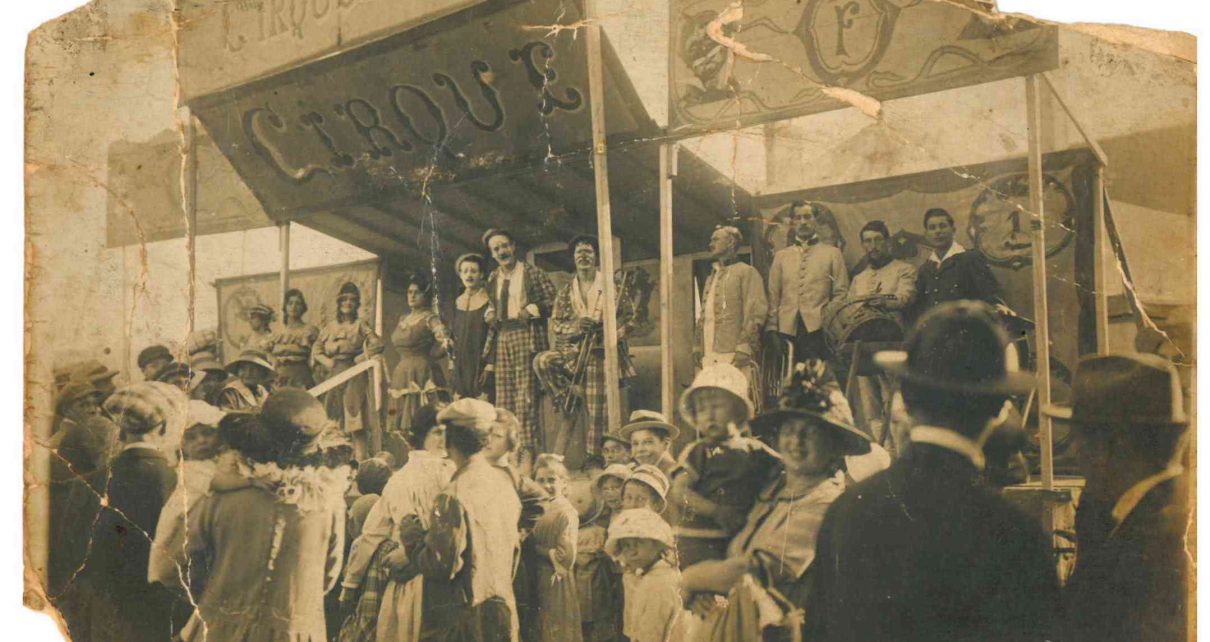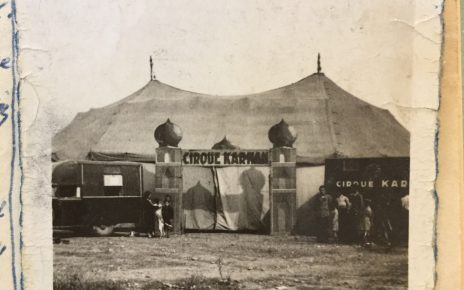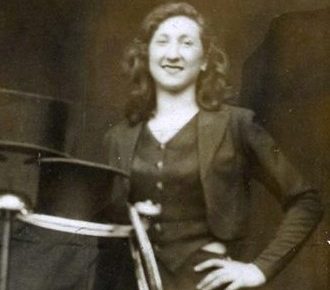After WWI, Baptiste Esther (1893-1973) and his wife Méli Falck (1896-1955) run with their children a small circus. About the daughters Rita and Zélie Esther we know that they worked with horses. Baptiste Esther trained also his Spanish godson Marius Swils who lived with the family and later became an agile horse rider. The Esthers were friends with the Michelet family who had settled down in Gièvres (Loir-et-Cher). In 1922, Baptiste Esther bought land opposite to his friend Paul Michelet whom he knew from joined military service. Later, marriages strengthened the bonds between the two circus families.
Despite the fact that the Esthers had property in Gièvres, the family was still considered by French authorities as so called “nomads” during WWII (see also the history of the Michelet and Sénéca family). Since the 6 April 1940 French authorities prohibited all travelling groups to move around the country. The Esther family decided to stay at Jeu-Maloches (Indre), 30 km South of Gièvres, close to a farmers’ family they knew. The Esther family members got employment as seasonal workers in several farms and vineyards around Jeu-Maloches.
At a certain point, Baptiste Esther got in touch with the Resistance who was active in this area. He got involved in its supply network, providing and distributing food in several hideouts around Jeu-Maloches.
Baptiste Esther managed to keep his circus horses during the whole war period. After the end of the war, and thanks to his confirmed links to the French resistance movement, Baptiste Esther could manage to restart the family’s circus business. As many small circuses, equipment was handmade with old materials. His grandson Baptiste Caplot, born in 1936, remembers that like all children of the family, he also had to take part in the set up and disassembling of the circus tent.
In the late 1950s, Baptiste Esther ceased the circus business due to rising costs and competition from big circus companies. Moreover, the circus profession did no longer attract the younger generation. The children of Baptiste and Méli Esther did not want to follow their parents’ footsteps. Baptiste and Méli Esther, however, continued to work in the ambulant show business and run a fairground lottery.
Autor: Laurence Prempain, based on a first version by Bruna lo Biundo
Sources
Entretien avec Baptiste Caplot, propos recueillis le 22 novembre 2018 à Gièvres, Barrier, Robert et Philippe, Cent cirques français sur “le voyage”. Autoédition, Crépy-en-Valois, 1994; Barrier, Robert, Grand répertoire illustré des cirques en France : 1845. Autoédition, Crécy-en-Valois, 1997; Filhol Emmanuel, Hubert Marie-Christine, Les Tsiganes en France. Un sort à part, 1939-1946. Paris, Perrin, 2009; Hubert Marie-Christine, Les Tsiganes en France 1939-1946, Assignation à résidence, Internement, déportation. Paris, Université Paris 10, 1997.





